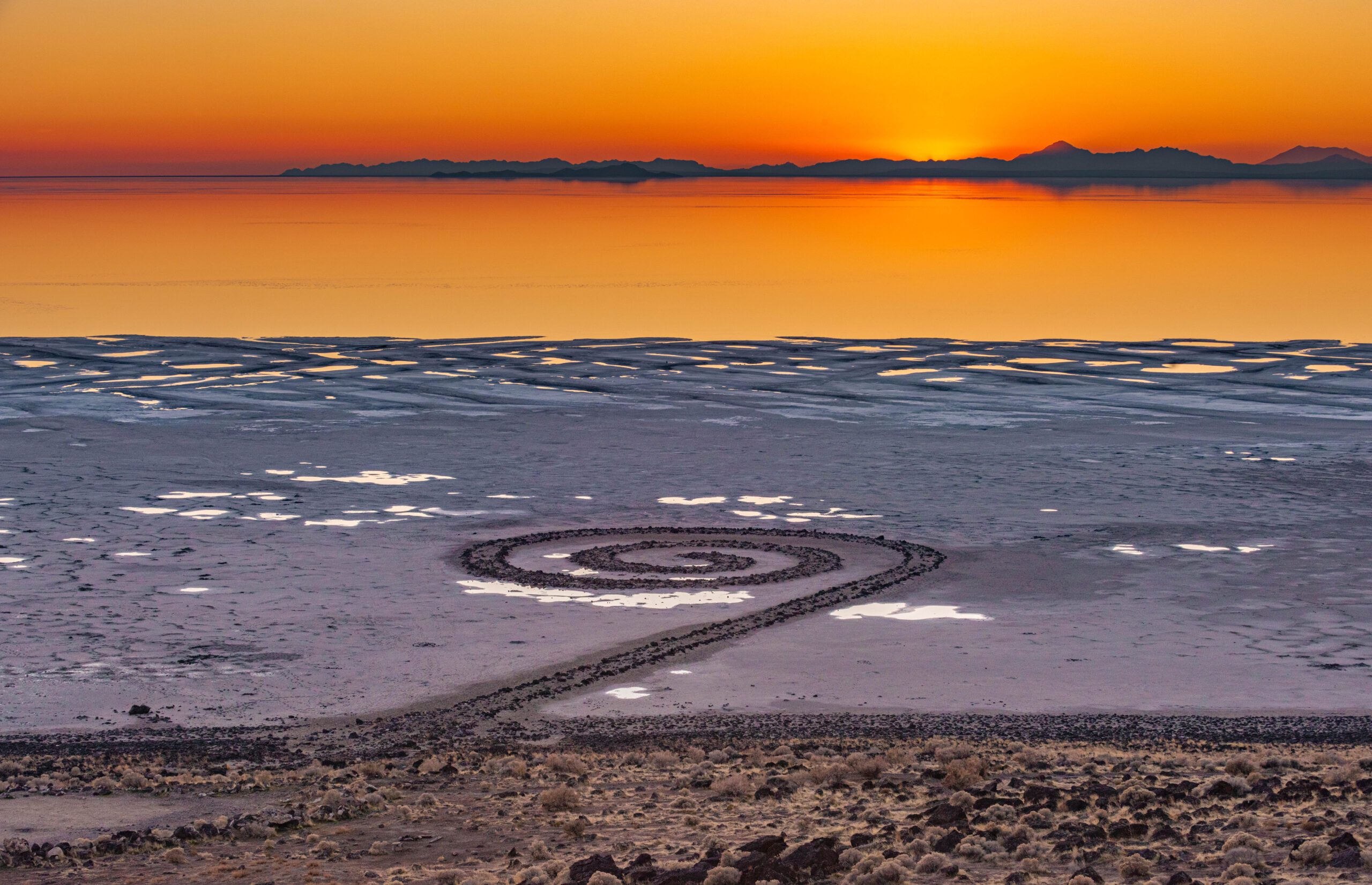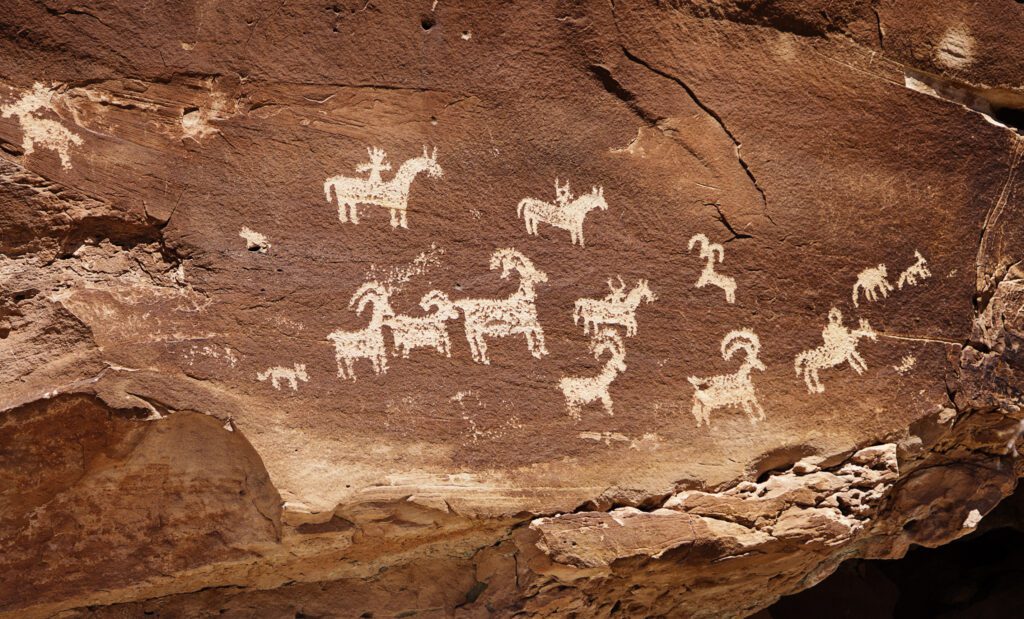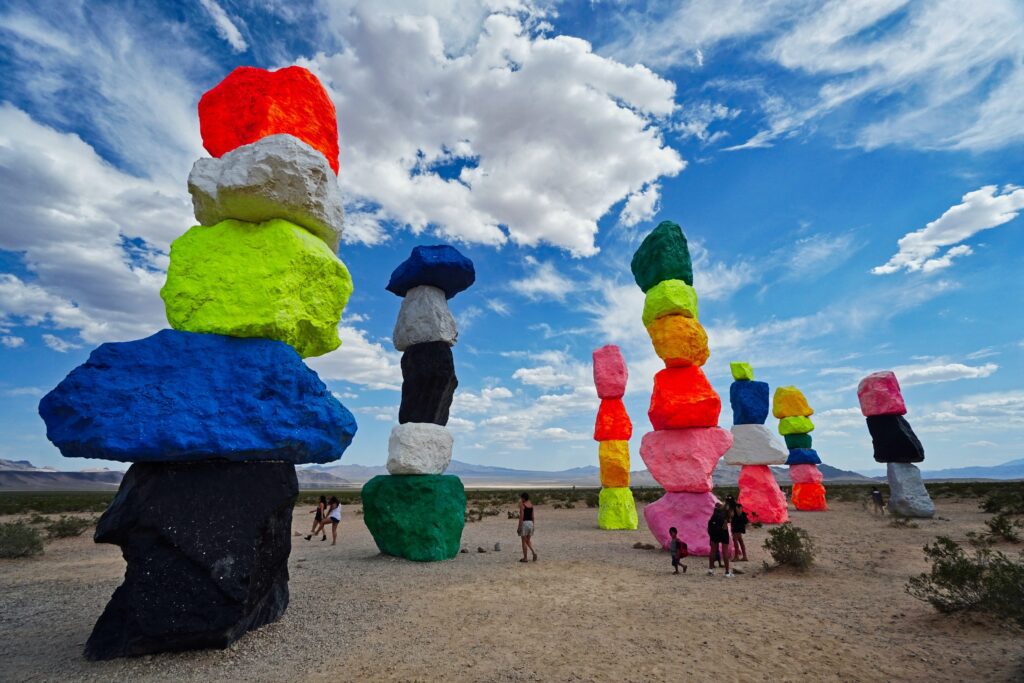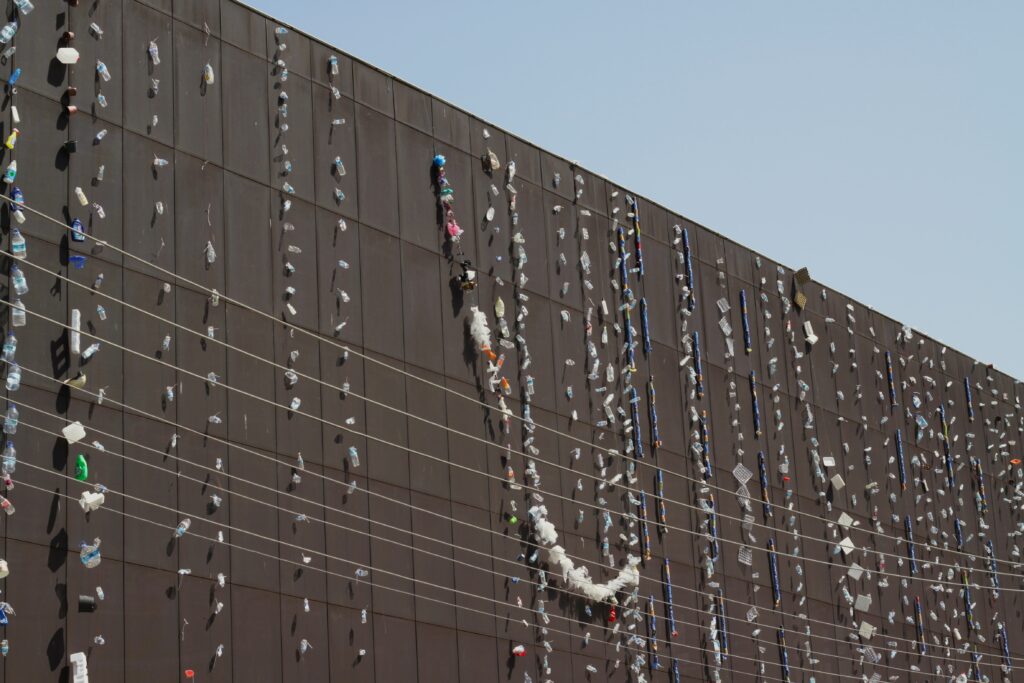
What Is Environmental Art?
Globally, more and more artists are using environmental art as a form of activism and striving to raise awareness about rising sea levels, climate change, deforestation, plastic pollution, and more.
From creating with recycled or sustainable materials to, quite literally, making art from trash, we’ll take a closer look at the Environmental art movement and the environmentalists offering a critical commentary on global warming through their work.
Environmental art practices include historical approaches involving depicting the natural world in art and more recent ecological and politically motivated works and installations.
Artists who work in this field generally subscribe to one or more of the following principles:
- Focus on the web of interrelationships in our environment — on the physical, biological, cultural, political, and historical aspects of ecological systems
- Create works that employ natural materials or engage with environmental forces such as wind, water, or sunlight
- Reclaim, restore and remediate damaged environments; inform the public about ecological dynamics and the environmental problems we face
- Revise ecological relationships, creatively proposing new coexistence, sustainability, and healing possibilities
With the growing concern for the health and integrity of our planet, Environmental art has seen an increase in popularity among artists. However, this is not entirely a new concept.
Environmental Art in Art History

It can be argued that environmental art began with the Paleolithic cave paintings of our most distant ancestors. While landscape paintings were not yet found, the cave paintings represented other aspects of nature essential to early humans, such as hunting scenes and wild animals found during that time.
More modern examples of environmental art stem from landscape painting and representation of the natural world. When artists painted onsite, they developed a deep connection with the surrounding environment and weather and brought these close observations into their canvases.
Claude Monet’s London Series exemplifies the artist’s connection with his natural and urban environments.
“For me, a landscape does not exist in its own right since its appearance changes at every moment; but the surrounding atmosphere brings it to life, the air and the light, which vary continually for me, it is only the surrounding atmosphere that gives subjects their true value.”
Just as the earthworks in the deserts of the west grew out of landscape painting, the development of public art stimulated artists to engage the urban landscape as another environment and as a platform to engage ideas and concepts about the environment to a larger audience.
This bridging of Conceptual art to the masses allowed for environmental issues to be presented in a digestible form. While this practice of earlier work was primarily created in the deserts of the American west, the end of the 1970s and the beginning of the 1980s saw works moving into the public landscapes across cities such as New York, Los Angeles and Chicago.
Sub-Movements of Environmental Art
Environmental art is a very broad concept rather than a specific art movement. There is no set definition of the term, but the movement encompasses a diverse set of social, political, and scientific subject matter and messages that can be categorized into several sub-movements. These sub-movements include Eco-Art, Conceptual, and Earth Art/Land Art.
Ecological Art
Ecological Art, also known as Eco-Art, is an artistic practice proposing new practices that are sustainable with the life forms and resources of our planet. It comprises artists, scientists, philosophers and activists devoted to ecological art practices.
Eco-art is distinguished by focusing on systems and interrelationships within our environment: ecological, geographic, political, biological, and cultural. It manifests as socially engaged, activist, community-based restorative, or interventionist art.
There are numerous approaches to Eco-art, including representational artworks that address the environment through images and objects and remediation projects that restore polluted environments.
There is discussion and debate among Eco-artists regarding whether Ecological art should be considered a discrete discipline within the arts from Environmental art.
A current definition of ecological art, drafted collectively by the EcoArtNetwork, is: “Ecological art is an art practice that embraces an ethic of social justice in its content and form/materials. Eco-art is created to inspire caring and respect, stimulate dialogue, and encourage the long-term flourishing of the social and natural environments in which we live.”

Conceptual Art
In the early 20th century, as many artists moved away from realism, they also moved away from depicting natural landscapes in the mode of prior eras.
Instead of painting on canvas, some artists began to produce more conceptual work that took place in nature or used nature as a medium. These projects emphasized location, materials, and process over preconceived ideas about a final piece.
Using natural materials and processes are a very important aspect of Environmental Art. Artists often use things that will grow, such as seeds, flowers, and algae; material that might decay, like wood and leaves; and the elements that are subject to change, like water and fire.
Environmental Art draws attention to the natural processes that underpin every aspect of life and reminds viewers that we ourselves are part of those transitions.
Land or Earth Art
Land Art, or Earth Art, was a critical avant-garde art movement pioneered mainly by American artists in the 1960s and 70s.
It developed through Minimalism, which championed a new simplicity and increasing frustration with the hierarchy of the mainstream art market.
Many young artists at the time were bothered by the restrictions of the gallery space, and the counterculture movement was encouraging individuals to rethink structures of power and how to operate outside of them successfully.
Artists began looking for spaces in urban wastelands and deserts to host different kinds of work, which were unique in composition and size.
Land Art was, however, one of the first noted art movements that aimed to express the fragility of the natural environment. Land artists would look for locations in many different environments, from open fields to forests to deserts.
These artists would transform these spaces with their installations, altering the space to express a message of restoration, which can then be projected to the more outstanding environmental issues. If an artist can transform a polluted space for the better, society can potentially do the same for the environment as a whole.
Considering Environmental Impact
Within Environmental art, a crucial distinction can be made between environmental artists who do not consider the possible damage to the environment that their artwork may incur and those whose intent is to cause no harm to nature.
For example, despite its aesthetic merits, the American artist Robert Smithson’s celebrated sculpture Spiral Jetty (1969) inflicted permanent damage upon the landscape he worked with, using a bulldozer to scrape and cut the land, with the spiral itself impinging upon the lake.
Sustainable art is produced considering the broader impact of the work and the reception of its environments (social, economic, biophysical, historical, and cultural). Some artists minimize their potential impact, while others involve restoring the immediate landscape to a natural state with their works of art.
Perhaps the most celebrated instance of environmental art in the late 20th century was 7000 Oaks, an ecological action staged in 1982 by German artist Joseph Beuys, in which the artist and his assistants highlighted the condition of the local environment by planting 7000 oak trees throughout and around the city of Kassel Germany.
Why Is Environmental Art Important?

The primary goal of Environmental Art is to bring awareness of the relationship between human beings and the environment by fusing the natural world and their own artwork.
These artists can work with the natural ecosystem to create impactful artworks and champion its preservation and conservation. The kind of art that results is as much a protest for climate reform as an artwork.
The most significant threat to our climate is the adverse concentration of carbon in the atmosphere. The carbon concentration has led to a global temperature increase across regions, snowballing into a series of natural disasters and further impacting the world’s glaciers.
According to NASA, the Earth’s temperature has risen by 1.9 degrees Fahrenheit since 1880. Greenhouse gases are considered one of the most significant contributing factors to the rise in the Earth’s temperature.
Rising sea levels threaten entire ecosystems, which could vanish and displace human populations. The impact of natural disasters, whether hurricanes or wildfires, destroy local environments and creates further burdens for rebuilding.
Environmental Art aims to shine a more prominent light on these issues and inspire reform or policy changes to help reverse climate change.
Environmental Artists Paving The Way

From Ana Mendieta and her haunting Silueta series to Olafur Eliasson, who brought the melting arctic to our doorsteps, Contemporary art continues to act as a vehicle for social purpose and change.
Andy Goldsworthy
Goldsworthy produces site-specific artworks which explore the transience of the natural world.
The British sculptor, photographer, and environmentalist celebrate the various stages of birth, maturity, and decomposition found in nature in his artwork.
He primarily works in the sub-group of Land art and incorporates organic materials such as rocks, leaves, pine needles, logs, and icicles.
Andy then chronicles the transformation of his work through photography, tracking the life cycle of these materials and the impact of surrounding ecologies on them. While he doesn’t preach about ecological issues directly through his work, there’s no doubt that his conscious choice of environmental pieces is a meaningful reminder of our undeniable connection to nature.
Ana Mendieta
Cuban-born artist Ana Mendieta incorporated the use of herself and the natural world in her seminal Siluelta series.
The series began in 1978, coinciding with the Earth art movement. This body of work would come to comprise over 200 pieces of photos, videos, and performances. Each piece consisted of Mendieta either physically laying on the ground and merging with the surrounding elements, such as leaves and twigs, or using her body as an imprint in the ground and photographing the ensuing outline absent of her form.
These outlines would then be emphasized with materials indigenous to the geography where they were made. This series was meant to showcase the relationship between humans and the environment.
Olafur Eliasson
Icelandic-Danish artist Olafur Eliasson is another artist-activist creating ecologically-minded sensorial experiences. His blockbuster pieces emphasize how valuable firsthand experience is when raising awareness and delivering lasting impact.
The renowned conceptualist was appointed Goodwill Ambassador for Climate Action by the United Nations Development Programme and has previously presented art’s ability to provoke visceral responses to climate change at UN Climate Action Summits.
Ice Watch (2014), a traveling show of glacial ice taken from the sea near Nuuk, Greenland, saw Eliasson and geologists navigate the chunks to Paris’ Climate Change Conference and other major cities. The hope was that these works would bring the urgent matter of melting glaciers closer to home.